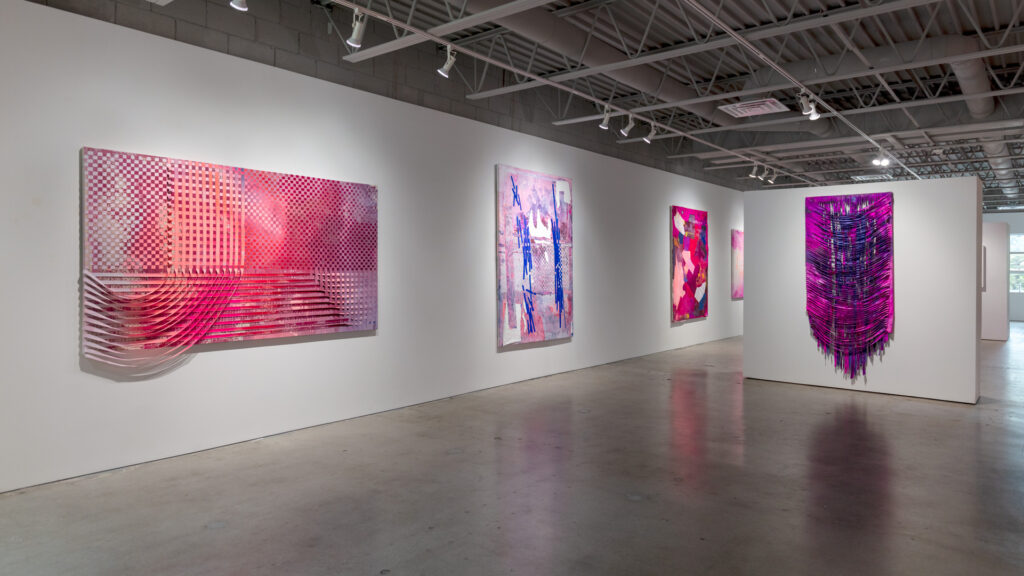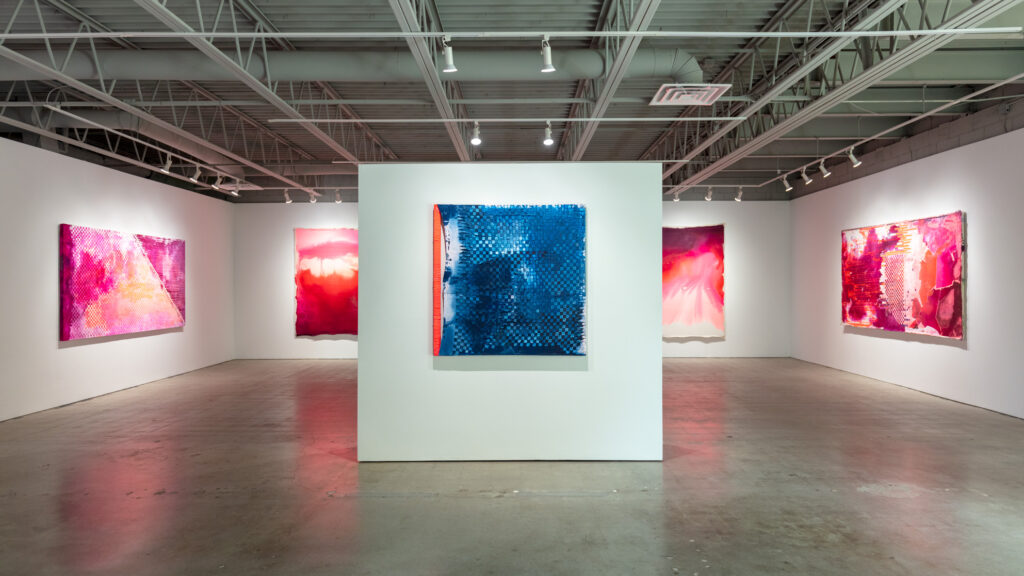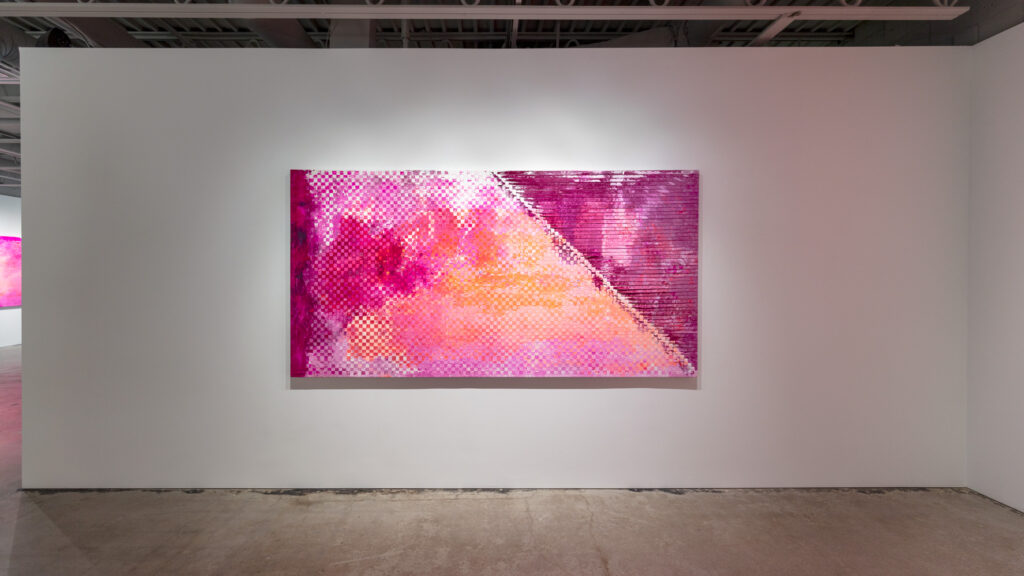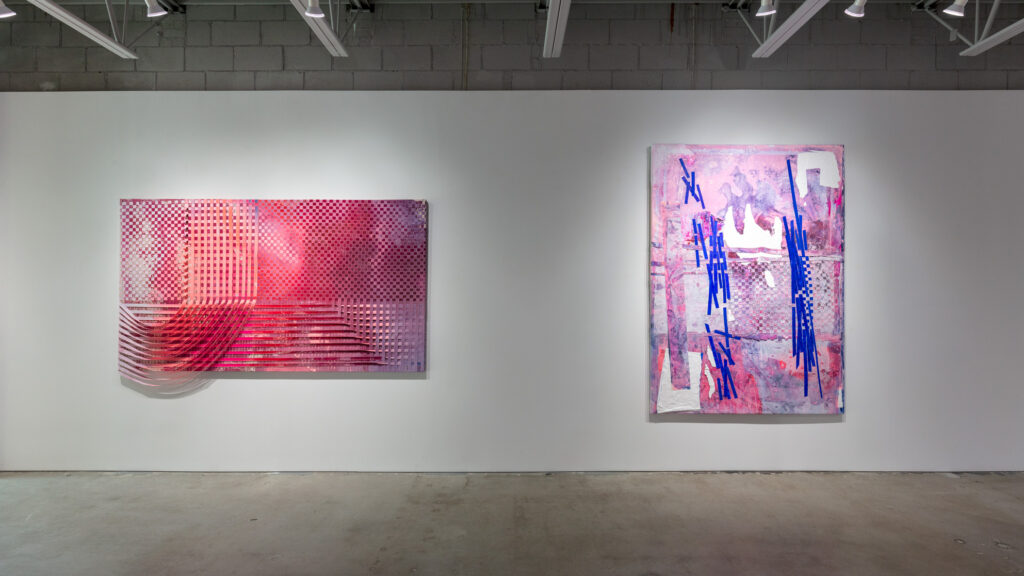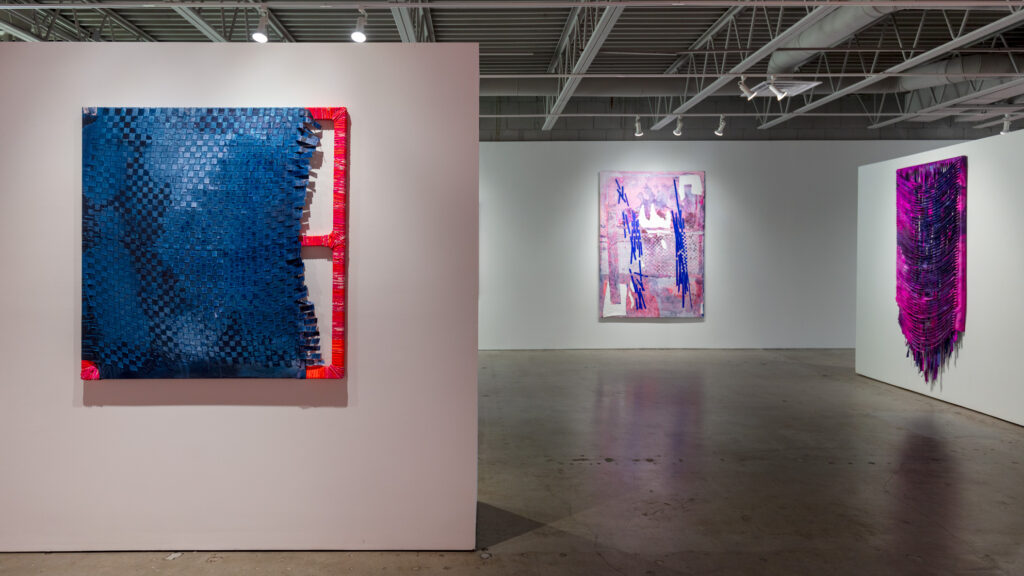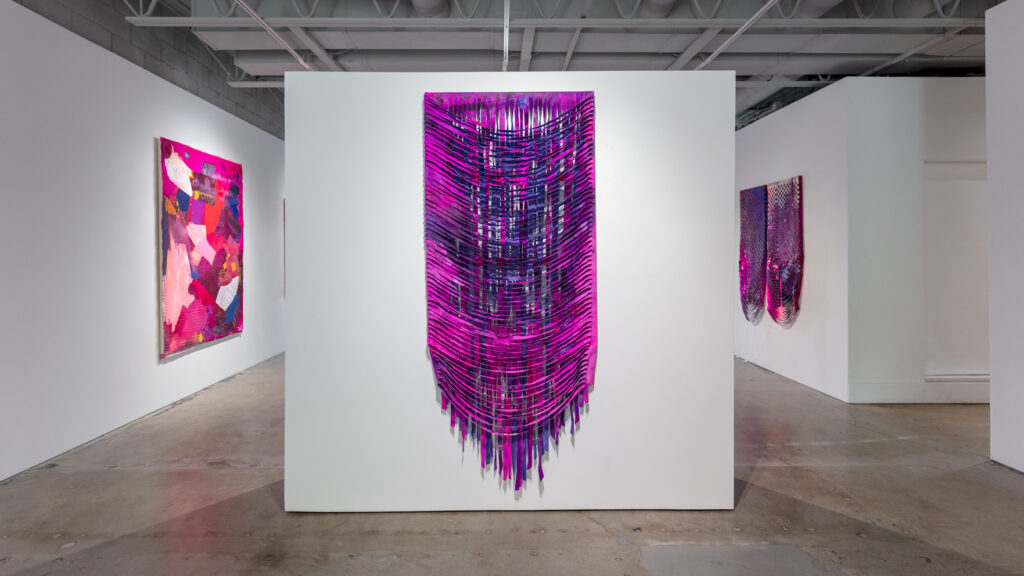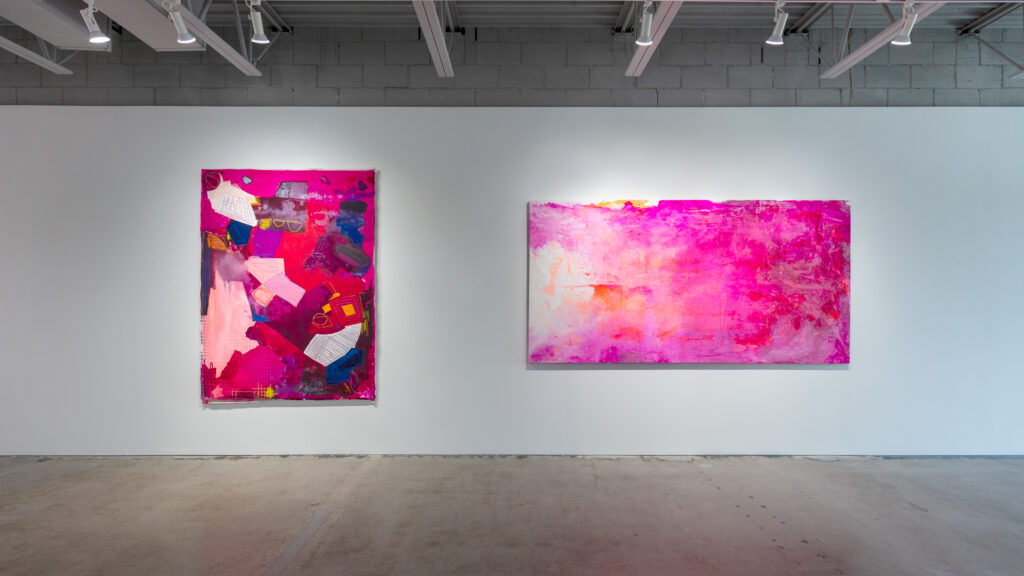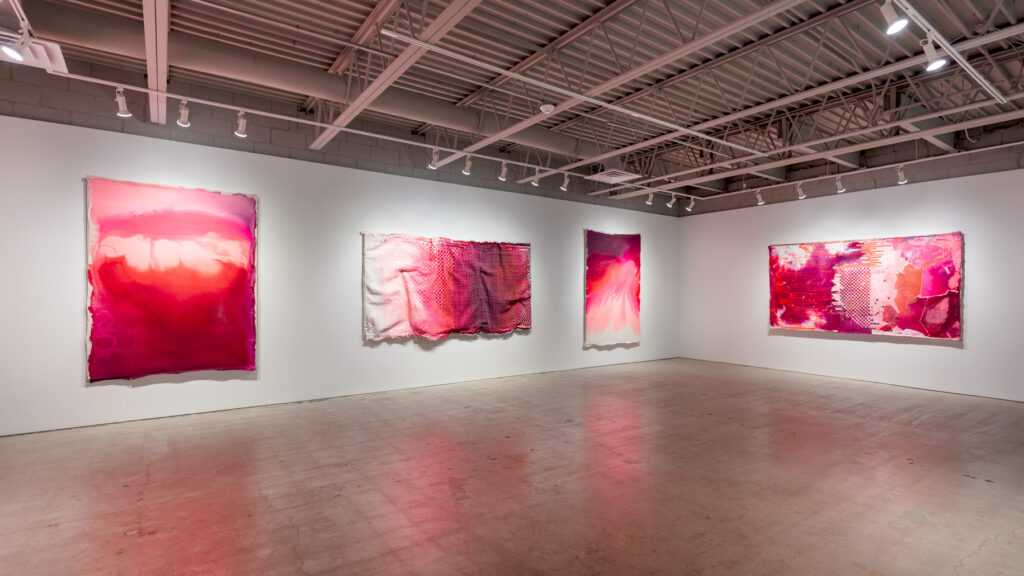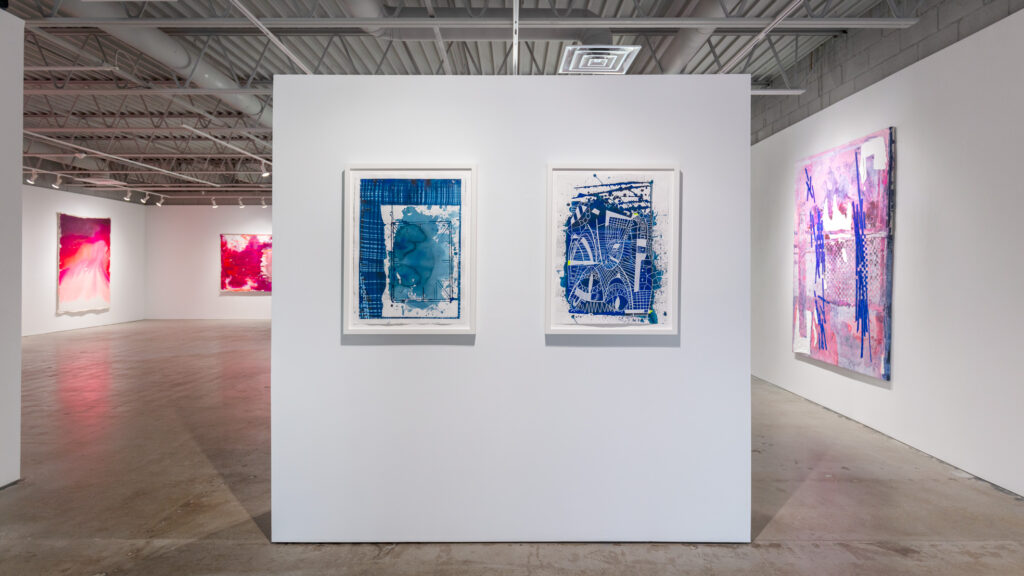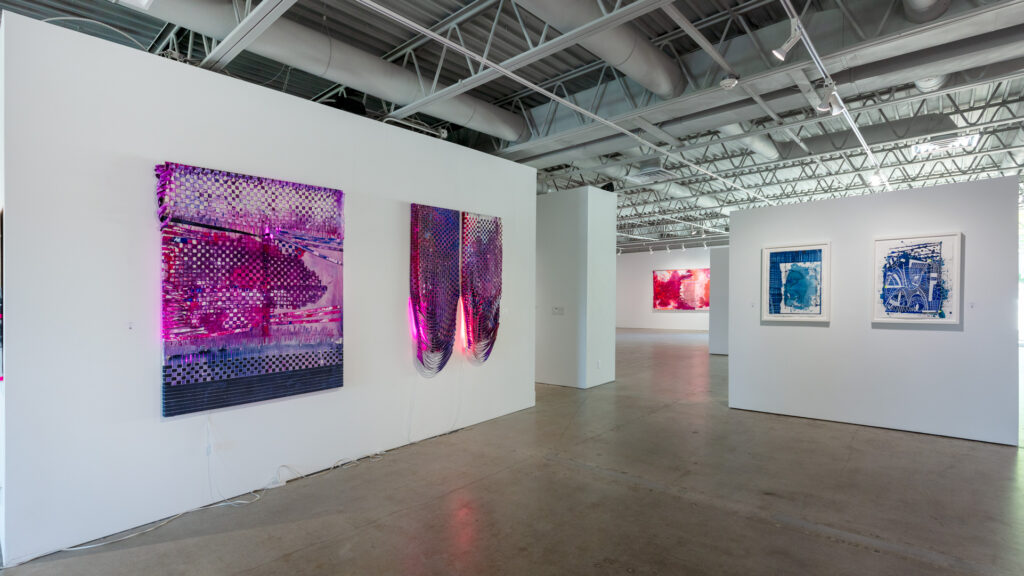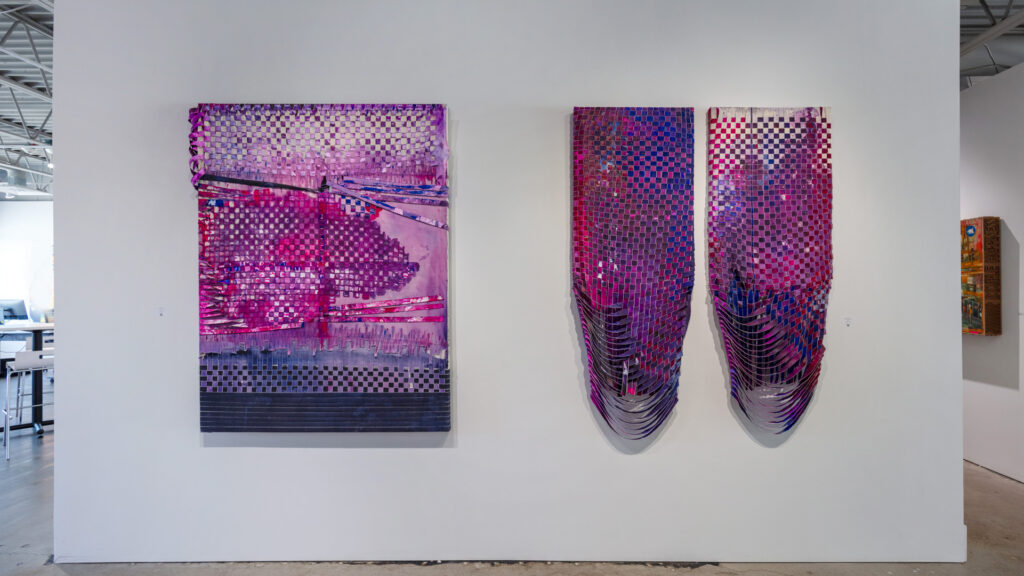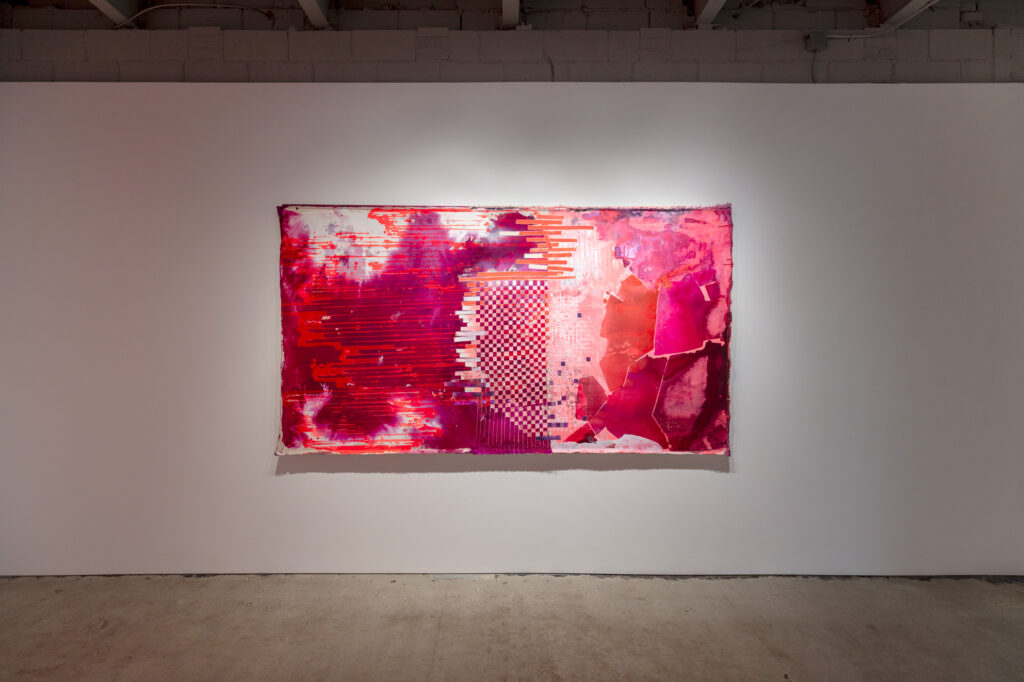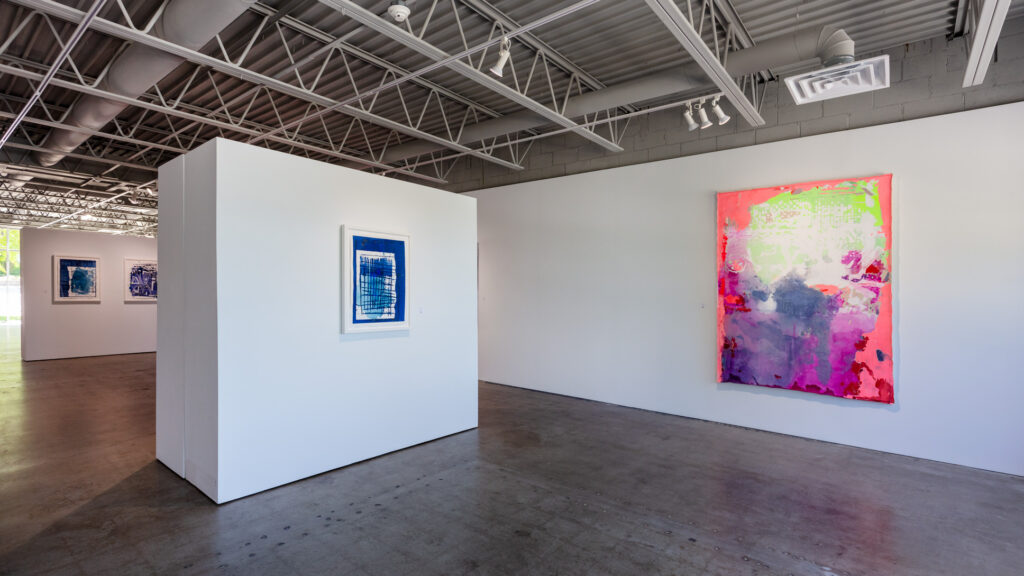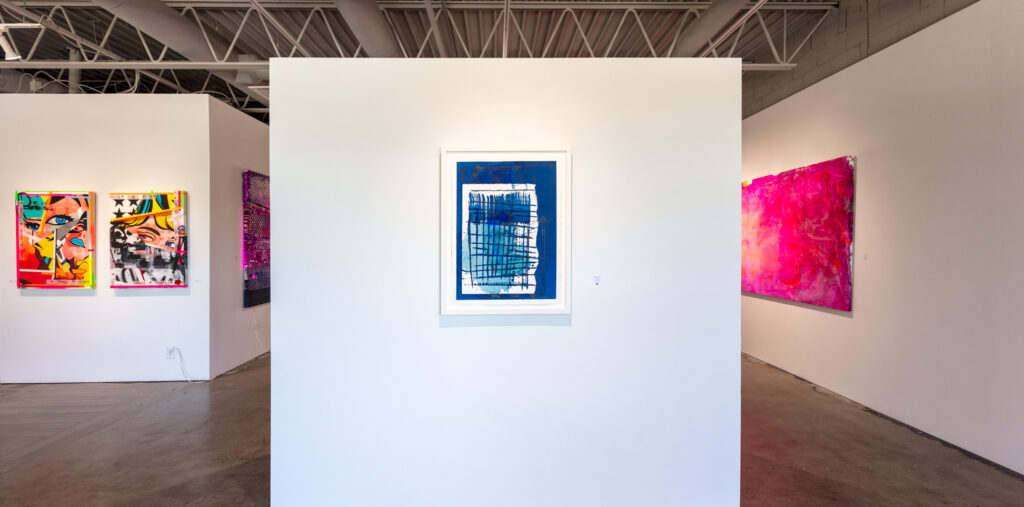TEXT BY MICHAELA MULLIN | VIEW IMAGES | SHOP WORKS
The Woven Glow of Linda Colletta
Being creative is not so much the desire to do something
as the listening to that which wants to be done:
the dictation of the materials.
–Ani Albers
Red Hot includes paintings built up through the process of laying drop cloths and pouring of paint—saturation upon and through multiple layers of canvas, of tearing apart and putting back together again. These works are marvels of red-hot emotion and discipline. Everything about red signals a passionate endeavor, and Colletta is no different in her pursuit of making intricate and intriguing artwork.
Colletta got her start in New York City painting backdrops for MTV and VH1. After 16 years in the industry, she left to dedicate herself to painting full time. Since then, she has expanded her practice to incorporate marks and palettes that fall somewhere between Abstract Expressionism and the Color School, like her great influence, Sam Gilliam. But in that overlap or gap, she welcomes a takeover of physics.
These works are organic evolutions, controlled, as well as uncontrolled and permitted by Colletta. In her studio, materiality, along with pigment and hue born of chromophilia (intense love of color) work to coordinate forms that are singular, and which also may move to the serious whim of gravity and chance.
Coletta says, “This work challenges the norms and unspoken rules of painting and life. It breaks the traditional picture plane and rejects conformism …Throughout my life, I’ve been told to “take it down a notch,” that I’m too much, too sensitive, too emotional, too intense, too pushy, too weird—too much to deal with. Powerful women often get branded this way, and powerful people of all identities and genders have had their true selves and expressions oppressed and rejected.”
Using her contradictory compulsions to make art via getting messy while keeping orderly everything that assists in the creation— for the three connected series included in this exhibit, Dropcloths, Wovens, and Pools—she manipulates acrylic paints in pinks, reds, purples, blues and oranges, and in ripping and weaving, she brings seemingly disparate things together, mends a wound, darns a haunted hole, and damns any force that would dismiss or contain her against her will.
Colletta feels that “working through the concepts behind her work is cathartic, and in turn imbues an energy of healing, triumph, and autonomy that I strive to transmit to the viewer.”
Intention and intervention, or a hacking of what will be will be. The rivers of paint, the lakes of paint, the ocean of it all, gets interrupted by thought, by hand, by the solidity of materials—which absorb, transform, and hybridize themselves by the timeless use of hand application. Colletta is gathering different expressions and experiences—a puzzling or meshing that which once was discrete, perhaps even broken.
“Spider Nebula” welcomes you into its gravitational field of letting go. Its purple and deep indigo are so intense, the fringe that swoops in concentric curves, falls like synchronized strips, yet remains faithfully attached to its framework. Ripples hang and the paint gradients and raw edges form a point at the bottom, an arrow of separation and cohesion. These torn pieces, so closely gathered, are reminiscent of Argentine artist Lucio Fontana slashes, now feminized, gone all the way and viral.
“Snake Eyes I & II” have the same intensity of saturated color, dark yet shimmering. They, like “Spider Nebula,” are the color of bruising, but with the night sky of northern lights to make the hematomatic a healing iridescence.
“Rubies & Rust” is a large-scale sumptuous topography of woven canvas that feels like a curvaceous foundation for the entire exhibit. Its peaks and valleys are joined by shades of luminescent colors, weft and warp, bubble and bob, a landscape hanging defiantly on the wall. But it was, once upon a time, a momentary cape the artist wore, a floor installation that found new shapes within itself, and a gravitational labyrinth that only hands could guide.
“Flaming Locks of Auburn Hair I & II” are blue and orange partial woven grids, which create negative space while wrapping the stretcher bars of the frame. These are wrapped like bandages securing a boundary for the strips of canvas which reach out to the right but don’t quite make contact.
“Mars at Midnight” and “Super Nova” are from the Pools series, where the applied paint mixes with itself to create luminous strata on the canvases, which are then overlaid on the frames to create raw edging on a glistening Rothko-like field which pulses as a heart.
And “Sunglasses at Night” is a bright light-emitting lynchpin to Red Hot. It is a two-dimensional rendering of her 3D inclinations. On canvas, she draws, she grids (which happens to be her go-to when sketching or doodling), and then interjects yellow and orange lines and shapes to float amidst the magenta, purple, and pink swaths of atmospheric segments.
Colletta’s works on paper are smaller, more contained within the frame and gentler to the picture plane. That is not to say they are simple or calm, but that they feel like moments in an expansive field of vibrations; their focus and interventions of line and color don’t merely complement within each composition—they complement an entire spatial world she has envisioned and made for the world.
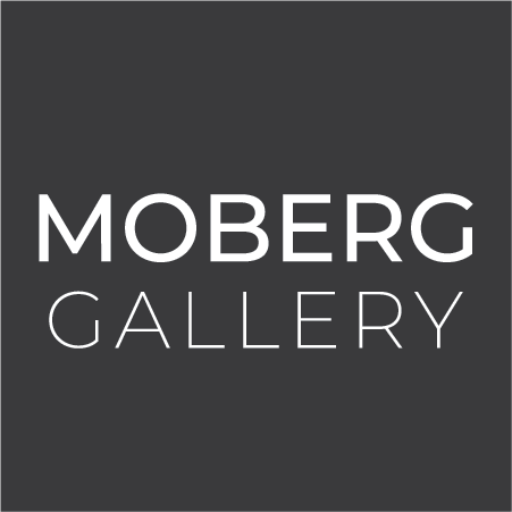
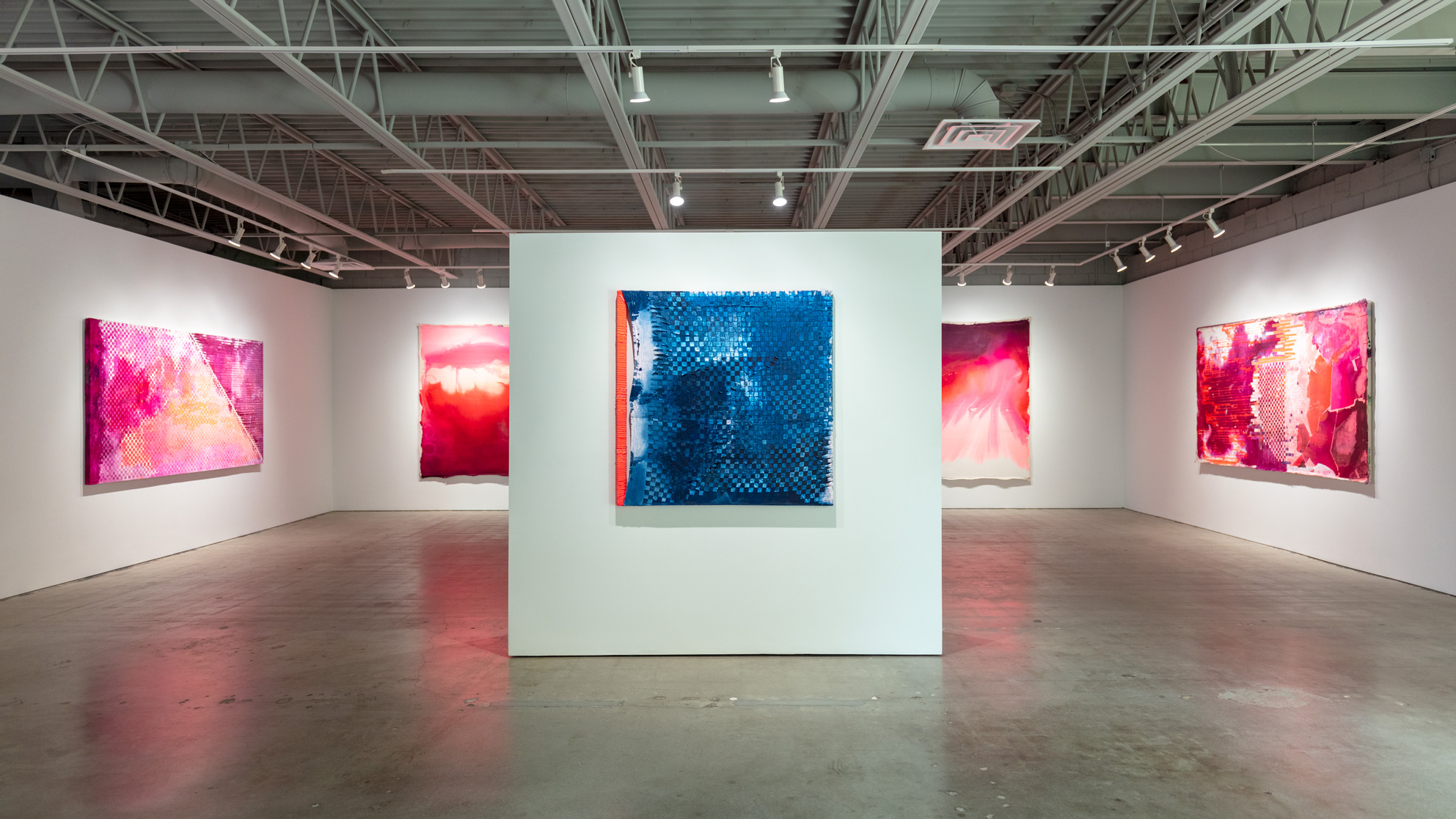
![Linda Colletta | RED HOT 0V9A4727[1]](https://moberggallery.com/wp-content/uploads/2024/05/0V9A47271-1-1024x576.jpg)
![Linda Colletta | RED HOT 0V9A4729[1]](https://moberggallery.com/wp-content/uploads/2024/05/0V9A47291-1024x576.jpg)
